Another night on a bus took us from Nasca to Arequipa. But this time we succeed in getting two seats on the first floor of the Cruzero bus from Cruz del Sur, which are normally booked out far in advance. The seats almost fully recline, are wide and extremely comfortable. So we could at least sleep a few hours and arrive not too tired in Arequipa.
There we checked into the Hotel Tambo Viejo, a very pleasant place with a nice garden and a roof terrace to relax from the bustling city. We stayed there three days, one of which we did nothing but relax, have a good lunch and actually sort our pictures and write several reports.
Arequipa is the second biggest city in Peru with over a million habitants and the gateway for trekkings and bus tours to the Colca Canyon, long considered the deepest canyon in the world but actually the second deepest with 3.160 meters, twice as much as the Gran Canyon in the USA. The Canyon del Cotahuasi, only 200 kilometers from Arequipa, is indeed the deepest Canyon, with more than 3.300 meters in depth, but very difficult to visit.
But Arequipa has also a few major points of interests. In our opinion, the Museo Santuary is a must see in the region. This museum is dedicated to “Juanita, the ice princess”. The frozen body of that Inca Maiden sacrificed more than 500 years ago was discovered in 1996 in astonishing good shape on the summit of Nevado Ampato, one of the highest and most active volcanoes in the Andes. It enabled archaeologists to achieve a break through in understanding human sacrifices during the Inca Empire.
The other highlight in Arequipa is the Monestario de Santa Catalina, an astonishing colonial religious building, actually a small city within the city, with many narrow streets and beautiful plazas. This sort of labyrinth is a place of silence and quietness where you can wander around and get partly lost soaking up the meditative atmosphere and enjoying the unique architecture.
Arequipa prides itself to be la “Ciudad Blanca” referring to the off-white volcanic rock many colonial houses were built of. But since these are usually individual buildings rather then a larger, closed ensemble of buildings, this image is not really obvious. What is impossible to ignore is the traffic in the city center: there are zillions of little yellow taxis and “collectivos” cruising the streets looking for passengers and honking their horns. The pollution is terrible and it is painful to watch the mostly indigenous women sitting at street corners all day and late into the night in clouds of exhaust fumes trying to sell whatever it is. Very often they bring their small children who sit there breathing in toxic fumes and are exposed to the noise and hectic of street life.
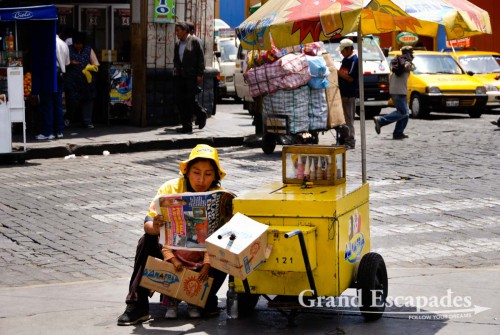
Street vendors can be found everywhere in Peru, selling just anything you can imagine and need or not … Arequipa, Peru
As far as restaurants are concerned, we stuck to the habit we had developed in Nasca: we would either eat in a small local restaurant or at the market for 4-5 soles or 1 Euro per meal. The only downside of these little restaurants is that the volume of the ever present TV is deafening and your meal is accompanied by endless screams, shouting and noise. Of course, we once tried a better “Picantería”, local restaurants serving traditional regional food. We chose Los Guisos Arequipenos, with a beautiful garden, a bit outside of town. For 100 Soles we had the most delicious entradas: “Ocopa”, potatoes with spicy peanut sauce and “Palta con Pollo”, avocado stuffed with vegetable and chicken. For our main dish we enjoyed Chupe de Camarones, (Shrimp chowder) and Cauche de Camarones (Shrimp chowder with melted cheese).
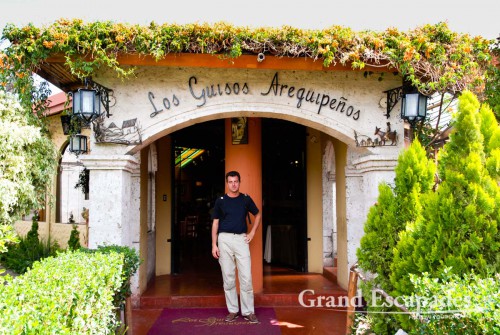
Los Guisos Arequipenos, one of the better “Picantería”, local restaurants serving traditional regional food, Arequipa, Peru
In Arequipa, after visiting a few travel agencies and asking a few other travelers, we decided not to take part to an organized trek in the Colca Canyon but to take the local bus to Cabanaconde, for a 6 to 8 hour drive for 230 kilometers on a road climbing up to 4.800 meters, and organize from there everything with a local guide.

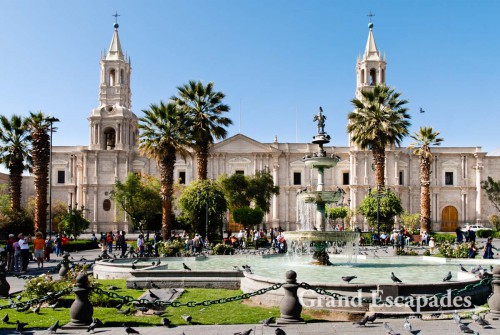
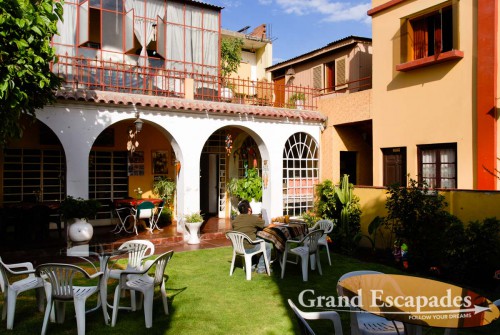
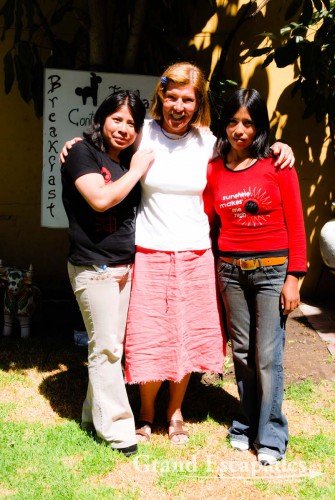
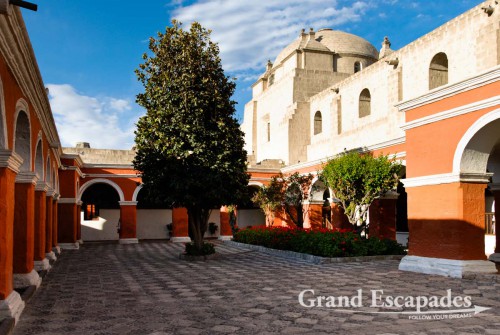
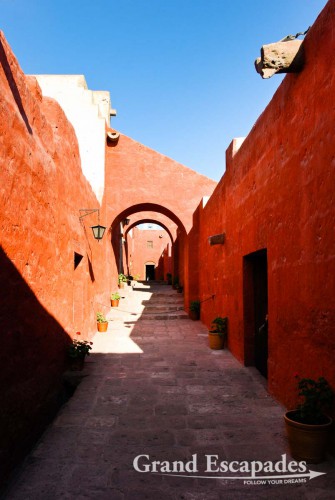
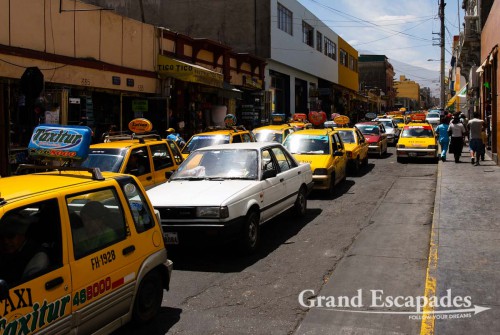
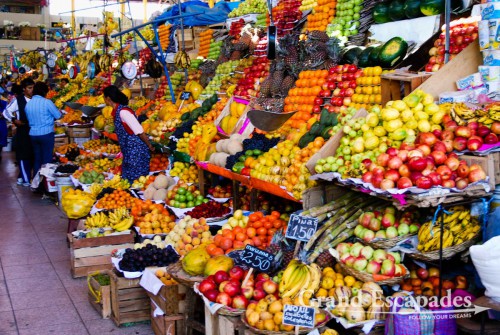
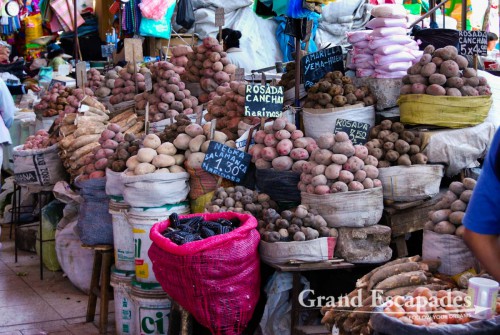
No comments yet.